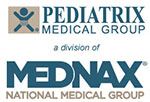Feature
Increasing Exclusive Breastfeeding Rates: A Novel Approach to the Assessment of High-Risk Neonates
Dana Gopal, BSN RNC-NIC, Northside Hospital Forsyth
Northside Hospital is a nationally acclaimed hospital system in the Atlanta, GA, metropolitan area and is the largest-volume maternity system in the nation. Approximately 20,000 babies are delivered every year at the hospital’s three Women’s Centers, all of which have designated level III neonatal intensive care units (NICUs). The hospital is known for caring for mothers and their babies, especially those experiencing high-risk conditions. The Women’s Center at the Forsyth campus is part of the system and delivers more than 3,000 babies every year. This center’s neonatal evaluation team (NET) is in attendance for all high-risk deliveries, which account for about 75% of all deliveries at Forsyth.
In 2014, an interdisciplinary team from the Women’s Center at the Forsyth campus was formed with the goal of increasing hospital-exclusive breastfeeding rates. Each department in Women’s Services developed an initiative to meet this goal. However, for the NICU, this was a more difficult task because of their compromised patient population. Instead, the idea of expanding skin-to-skin (STS) contact to the delivery room for high-risk infants was explored. The benefits of STS contact between mother and baby are well-known. Research suggests STS contact can stabilize heart and respiratory rates as well as blood glucose levels in newborns (Academy of Breastfeeding Medicine, n.d.). STS also has been shown to improve not only short-term breastfeeding rates, but also mother-infant bonding and long-term breast feeding rates (Academy of Breastfeeding Medicine, n.d.). The NICU team considered ways to modify how they conducted their initial assessment of the high-risk infant immediately after delivery. Evidence shows that only 10% of infants need intervention beyond the initial steps of the neonatal resuscitation program and 1% require extensive resuscitation (Weiner & Zaichkin, 2016). To decrease the time in which mother and baby are separated and improve exclusive breastmilk feeding, we developed a guideline that allows for initial assessment of the high-risk infant on the mother’s chest (i.e., STS) instead of in the designated resuscitation area.
Method
We referred to our hospital policy for the defined neonatal/maternal risk factors that required attendance of the NICU delivery resuscitation team. From there, we developed guidelines for determining the eligibility for high-risk newborns to be assessed during STS with mother. It was reinforced that although these were guidelines, professional judgment took precedence. Implementing this new initiative required lots of education, discussion, and collaboration between the NICU and labor and delivery (L&D) teams and other medical providers.
Results
Retrospective data (pre-implementation) from 2013 were collected for comparison. The STS assessment initiative was implemented in 2014 and compared to postinitiation data from 2015 and 2016. Exclusive breastfeeding increased by 13% for babies considered high risk at delivery who were assessed during STS contact with their mothers. Previously, 100% of the babies who had NET in attendance at their delivery were separated from their mothers immediately after birth and taken to a radiant warmer for further assessment and care. Postinitiative, instances of separating mom and baby decreased to 40%. The unexpected result was that STS assessment and holding immediately after birth resulted in a 39% resolution of infant mild respiratory distress. Prior to the initiative, all babies with any degree of respiratory distress were immediately transported to an observation nursery in the NICU for further examination and care, which resulted in hours of separation for baby and mother.
Barriers
Implementation of a new policy or procedure can be a challenge for staff. The NICU nurse’s role is to assess and act quickly and efficiently in helping newborns adapt to extrauterine life to prevent poor outcomes. This change in culture takes time, education, and data to show the benefits of a different approach in the delivery room of a high-risk infant. Providers embraced the change in practice as it was a patient satisfier and made for a smoother process for delayed cord clamping. Although we defined the role for the NET and L&D registered nurses, there was some confusion about where the NET registered nurse should stand in relation to the L&D nurse and the parent. Prior to the initiative, the newly delivered infant would be swiftly brought to the warmer for NET evaluation. The team learned to briefly discuss the plan to assess the stable infant on the mother at each delivery. Again, it takes time for everyone to redefine his or her role. Some team members remain resistant to the change, but they slowly are embracing the new practice.
Conclusion
Conducting after-birth assessments of high-risk newborns during STS contact is possible and decreases unnecessary separation of the mother/baby dyad. Assessment of the high-risk newborn during STS contact may increase exclusive breast feeding and improve stabilization of mild respiratory distress. Interdepartmental collaboration and communication is important to the success of a new initiative.
References
Academy of Breastfeed Medicine. (n.d.). Resources. Retrieved from https://www.bfmed.org/resources
Weiner, G. M., & Zaichkin, J (Eds.). (2016). Textbook of neonatal resuscitation (7th ed.). Elk Grove Village, IL: American Academy of Pediatrics.


